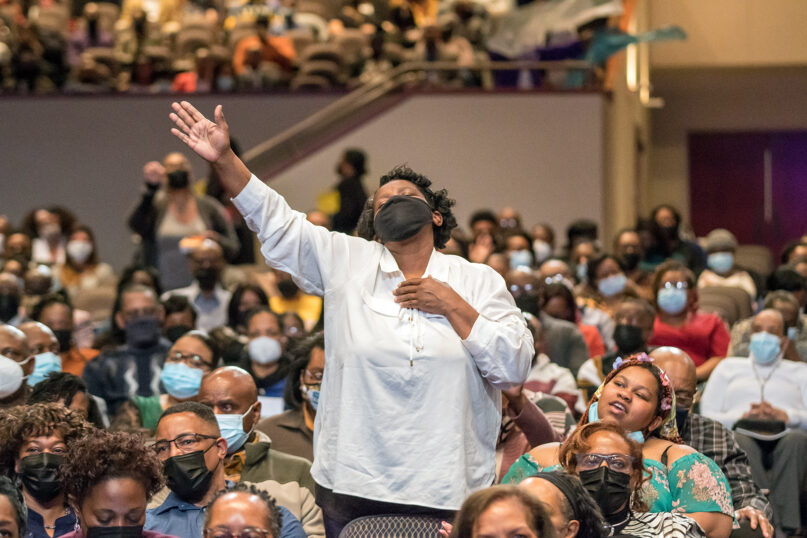(RNS) — At the main campus of The Summit, a Southern Baptist megachurch with 10 campuses across North Carolina, Curtis Andrusko, the church’s pastor of weekend ministries, doesn’t know what or just who to expect on Easter Sunday.
The church has been meeting in person for more than a year, said Andrusko, and in-person attendance has slowly crept up again.
“We’re about 75% back,” Andrusko said, while acknowledging that the online viewing is still much higher than it was before the pandemic and includes many out-of-state viewers.
So on Easter, which falls on April 17 this year, the Summit is holding a single service for its combined congregations in a 20,000-seat outdoor amphitheater in Raleigh. Andrusko thinks the venue will be close to full. He’s just not sure who will be there.
“All the trauma of 2020, from race to politics, to mask mandates and vaccines caused such divisions — even in churches, sadly — that I don’t know if I could say that 10 out of 10 are the exact same people as before,” he said.
After two years of COVID-19 restrictions and fears, faith leaders across the United States are cautiously hopeful as local authorities have dropped orders to enforce mask-wearing and cases stay low in most of the country. A confluence of holy days in three traditions, with Easter and Passover falling within the same week, may make this week the best many houses of worship have seen in two years.
At the same time, many are uncertain about what a resurgence will look like and whether it will stick.
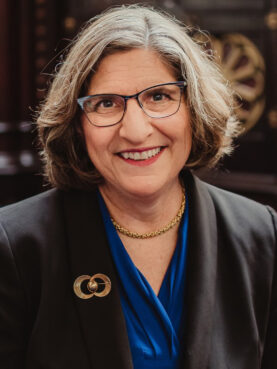
Rabbi Lucy Dinner. Photo courtesy of Temple Beth Or
At Temple Beth Or, a large Reform congregation in Raleigh, mask and proof-of-vaccination mandates were abolished on April 1. Since then, attendance has returned to pre-pandemic numbers, with between 75 and 110 people attending Friday night Shabbat services.
“There’s a sense of joy in being back together, and people feel they have permission to smile and laugh and a real desire to be engaged in community again,” said Rabbi Lucy Dinner, Beth Or’s longtime leader, before issuing her own caution: “But that’s three weeks. We don’t know if it will hold up.”
The congregation’s membership of 500 families has fallen some 10% since the pandemic began, said Dinner, but she attributes the losses to a broader decline affecting mainline churches and synagogues.
Her greater worries, Dinner said, have to do with the rising cost of homeownership in the area and the local need for jobs, which could cut into donations. Her staff is also concerned that the culture of volunteering at synagogue has taken a hit.
“That takes nurturing to bring back,” Dinner said. “It takes a feeling of connection and engagement.”
At the Church of the Ascension in Pittsburgh, a 40,000-square-foot white tent is a symbol of its, and many faith communities’, ready-for-anything approach this year.
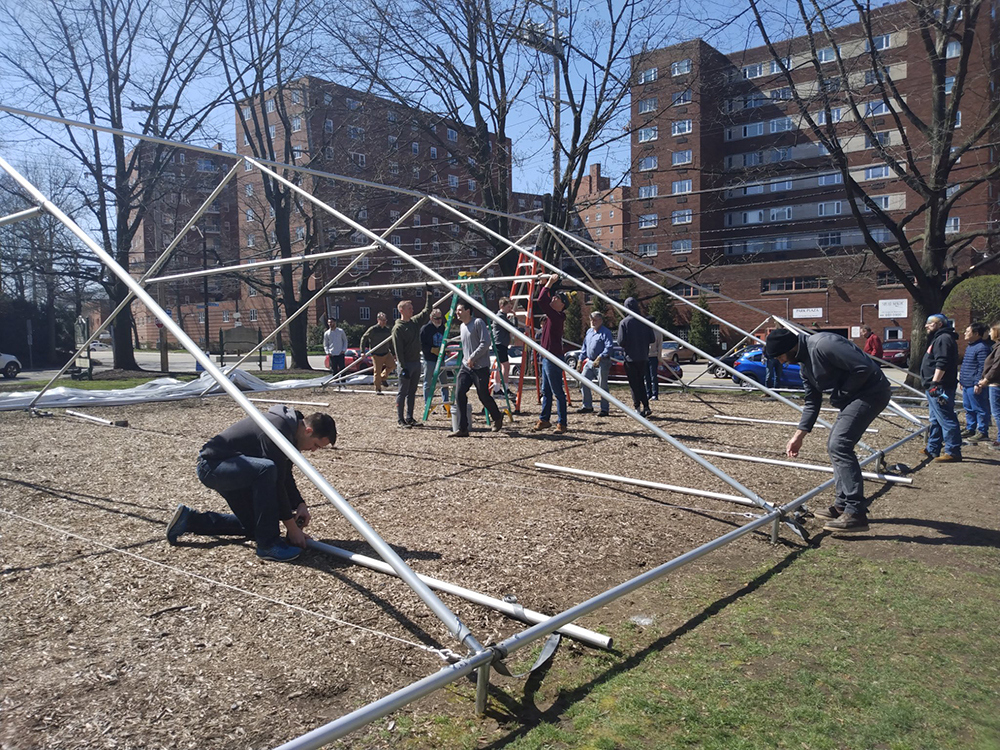
People work to construct a large outdoor tent at Church of the Ascension in Pittsburgh, Pennsylvania, April 2, 2022. Photo courtesy of Church of the Ascension
Originally set up to accommodate spillover from the church’s historic building when social distancing limited space in the pews, the tent serves as a backup in case restrictions are reimposed. “If we had to pivot again, we could immediately go to outdoor services,” said the Rev. Jonathan N. Millard, pastor of the Anglican church in Pittsburgh’s Oakland neighborhood.
For now, Ascension’s indoor, mask-optional Sunday services currently welcome roughly 420 attendees, down from about 500 before the pandemic. While some left because they disagreed with the church’s COVID-19 protocols or because they simply “got out of the habit of coming,” said Millard, the church gained 100 new members during the lockdowns.
While Millard hopes that Easter will boost attendance further, the livestreamed services that the church started as a response to COVID-19 restrictions are likely to be a more powerful draw: Millard said many of Ascension’s newcomers joined after watching from home, and the livestream usually gets 200 views after a week.
“I think the trajectory we’re seeing is absolutely of rebuilding, renewal and growth,” he said.
At Amplify Church, a youth-oriented nondenominational church with three locations around Pittsburgh and another near Philadelphia, the churn of the pandemic years has also brought growth, said Pastor Jason Howard — as well as a revived spirituality. Amplify’s already high-octane services are “better than they were before the pandemic, Howard said, ”because those attending have been forced to lean into their trust in God even more.”
While still not back to par at their oldest location, Amplify has increased attendance with a new, larger building at its downtown Pittsburgh campus and two new campuses, in addition to some 3,000 new viewers on YouTube.
Those numbers are especially impressive considering Amplify’s core membership among millennials and Gen Z has represented the biggest defectors from religion during the pandemic. In 2022, 44% said they never attend religious services, up from 30% a year earlier, according to Springtide Research Institute. A recent Springtide study also found that just 10% “found joy” in pandemic-era virtual religious gatherings.
Howard is not satisfied with Amplify’s gains, however, saying he hopes to “convert” YouTube worshippers to in-person members.
“Part of that goes back to our theological bent,” said Howard, pointing to the church’s Pentecostal roots, “but I just believe that there is an experience that happens in your soul when you are in person and you’re experiencing the presence of God in person that can’t be replicated the same way online.”
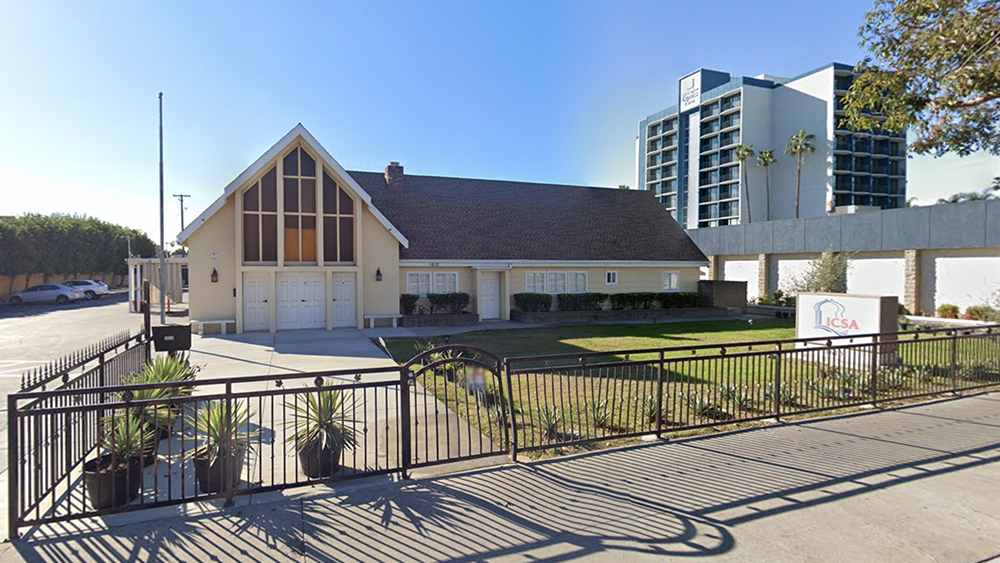
The Orange County Islamic Center of Santa Ana. Image courtesy of Google Maps
Other communities have employed other means to restore their pre-pandemic connections. The Orange County Islamic Center of Santa Ana, south of Los Angeles, has attracted more than 300 people every day since the beginning of Ramadan with free iftars — the meals eaten to break the daily Ramadan fast.
Though continuing to wear masks and staying 3 feet apart when they gather, the center’s numbers have come back strongly. “This year, thank God … everything is coming back to normal, almost to normal,” said Holly Sen, the center’s treasurer. “It feels like the heavy load is lifted … We can pray. We can see people. We can give out clothing and money for the needy.”
Food was key to the Islamic center’s adaptations during the pandemic as well. During Ramadan last year, it partnered with a group called Latino & Muslim Unity to give congregants and their neighbors free COVID-19 shots, followed by a meal at a halal taco truck stationed onsite.
Now, said Sen, “We have more people than ever come to the mosque, to pray and to open fast and just to mingle.”
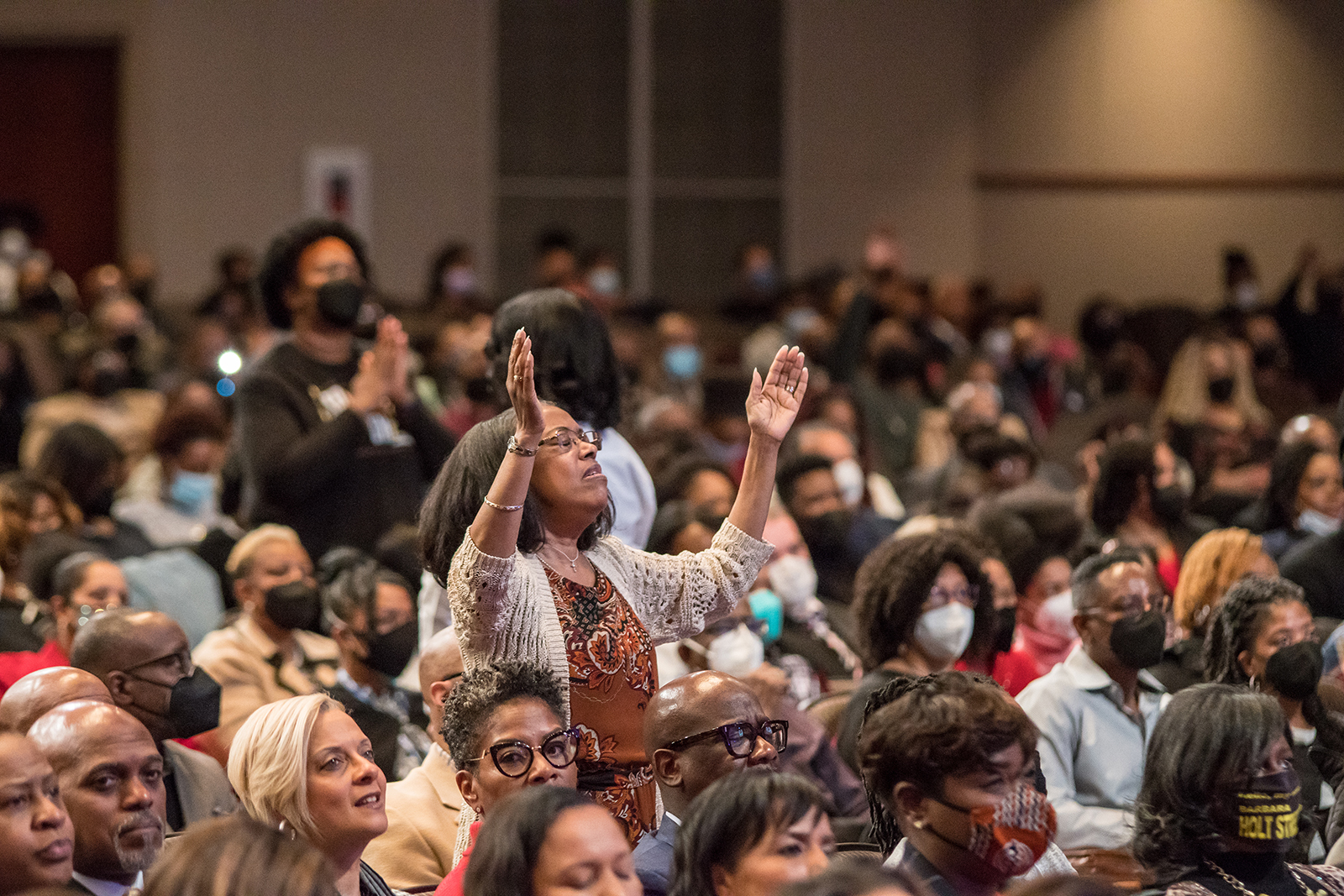
People attend one of the first in-person worship services in two years at First Baptist Church of Glenarden on Sunday, April 3, 2022, in Upper Marlboro, Maryland. Photo courtesy of FBCG
In some of the hardest-hit communities, however, the holiday season is no guarantee of big crowds. The area around Maryland’s First Baptist Church of Glenarden, a predominantly Black megachurch close to Washington, D.C., saw some of the highest infection rates in the state.
“I still think there’s some anxiety among people about going back into large crowds for church,” said Pastor John K. Jenkins Sr. (“I don’t know why,” he added, “because football and basketball games seem to be doing well.”)
After Jenkins vowed not to reopen until “everyone could come,” First Baptist twice shut down in response to COVID-19 spikes and only returned to in-person services the first Sunday in April. About half of its pre-pandemic attendance of 10,000 to 11,000 has returned, with some 90% of them wearing masks.
Meanwhile, online attendance has expanded so greatly that the church recently added “International” to its name to recognize its new membership. Its online campus minister, the Rev. Keshia Dixon, estimates the church has close to 100,000 views over the course of a week.
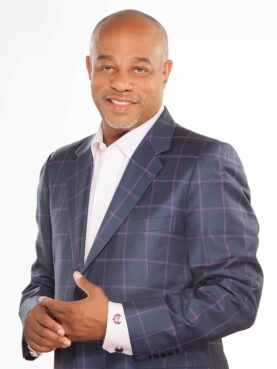
Pastor John K. Jenkins Sr. Photo courtesy of FBCG
Now the congregation, which is affiliated with Converge, a mostly white denomination, has members from as far away as South Africa and Australia.
“I didn’t let people join our church who belonged outside of the (Washington area),” Jenkins said of pre-pandemic days. “But COVID taught us that we can still connect with those people. They can still be actively involved and engaged. They can participate in all of our ministries and classes and discipleship groups. They can do everything.”
“It has pushed our church forward,” he added.
Not everyone is ready for a post-COVID-19 resurgence. The Rev. Emmy Kegler, the pastor of Grace Lutheran Church in northeast Minneapolis, knows many of her fellow clergy are excited to celebrate Easter as pandemic restrictions lift. She is dreading it.
“It feels like the opposite of resurrection,” she said.
Every week, she receives a complaint about her church’s mask mandate, she said, but she doesn’t want to remove her mask to speak in a roomful of unmasked people for fear of bringing home the illness to her wife, who is pregnant with their first baby after a long journey through fertility treatments.
Kegler said she is caught between wanting to protect her growing family and wanting to serve her congregation well. “I just keep wondering: Is my desire to protect my family holding my church back?” she said. “Am I destroying our budget and our community because some of our longtime members are angry or upset or disappointed or unhappy in some way that I’m requiring masks and they’re going to leave?
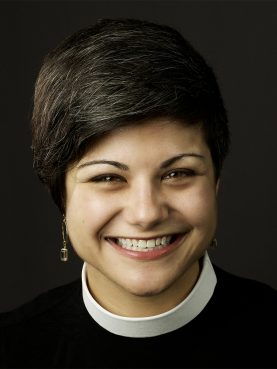
The Rev. Emmy Kegler. Courtesy photo
“I think every pastor is weighing that in some way or another.”
Grace now averages about 45 or 50 people each Sunday, about two-thirds of its pre-pandemic attendance.
This Holy Week, the church is planning a dinner on Maundy Thursday and a masked service on Good Friday. Its queer community will host the Easter Vigil on Holy Saturday. Kegler also will lead an outdoor Passion Walk guiding participants through the streets of Minneapolis while narrating Jesus’ last steps.
On Easter Sunday, Kegler is expecting to see more visitors than usual. She also is expecting to field questions and comments about the church’s mask requirement: “How much longer do we have to keep doing this?”
“Looking forward to Easter, it’s supposed to be this joyous resurrection celebration, and, for me, it just feels like it’s going to be stuck in death. I just feel like people are rushing on to Easter morning, and I will be stuck on Holy Saturday,” she said.
